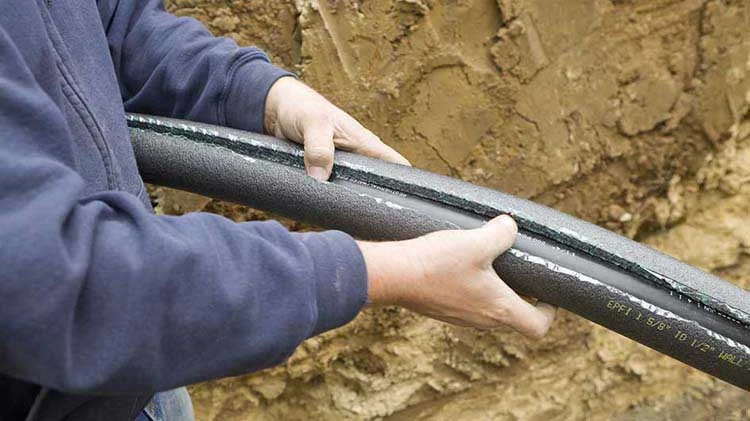What To Do if You Have Frozen Pipes
If you turn on a faucet and only a trickle of water comes out, it’s a sign that your pipes may be frozen. When this happens during extremely cold weather, it’s crucial to take immediate action to prevent further damage.
How to Find Out If You Have Frozen Pipes
The most obvious symptom is when you turn a faucet on full blast and only a trickle comes out. If this happens when the temperature is well below freezing outside, it’s time to take action!
To-Dos for Frozen Pipes
Here are a few things you should know to do if you have to tackle these frigid frustrations:
Turn off the Main Water Line
The only way to stop the water flowing from a burst pipe is to turn off the main water line. Even if the frozen pipe isn’t leaking, shut off the main water line just in case.
Turn On the Faucet Supplied by the Frozen Pipe
This releases pressure within the pipe and gives water from the frozen area somewhere to go once you thaw it. When you start to thaw the pipe, this will also give the steam a place to escape.
Thaw Hidden Pipes
If the frozen pipe is located behind a finished wall, you should:
- Turn up the thermostat and wait for the ice to thaw.
- Tear out a section of the wall to access the pipe.
- Use an infrared lamp to thaw the pipe through the wall.
Apply Heat to an Exposed Pipe
Once you locate the frozen portion, apply heat to slowly thaw the ice using one of these products:
- Hair dryer
- Infrared heating lamp
- Portable electric space heater
- Electric heating pad or blanket
- Electric pipe heat tape
- Towels soaked in hot water
Devices to Avoid When Thawing Pipes
The following devices are dangerous to use for this task and can result in damaging fires:
- Blowtorch
- Kerosene
- Propane heater
- Charcoal stove
- Any other open flame device
Check for Other Frozen Pipes
As long as the newly thawed pipe hasn’t burst, turn the main water line back on and test all the faucets in your house to see whether any other frozen areas exist.
Call a Plumber
A professional plumber can help you with the following:
- Locate frozen pipes behind finished walls
- Safely thaw both accessible and hidden pipes
- Replace burst pipes
- Add insulation to exposed pipes and unconditioned areas
Prevent Frozen Pipes in the Future
Run a space heater in unconditioned spaces where pipes are located to keep the temperature above 5 degrees.
Need Help Thawing Frozen Pipes?
Recover from frozen pipes with the least amount of property damage possible — contact 24/7 Emergency Plumbers for frozen pipe services today!
If the above steps do not resolve the issue
Please note: Should crews determine that the pipes are frozen on private property (from the property line into the home), you will be advised to contact a plumber.
Frozen Pipe FAQ
This issue can raise many homeowner questions. We are here to help answer those questions! Below are 10 commonly asked questions about frozen pipes.
What causes frozen pipes?
When temperatures drop below 32 degrees, your pipes have a chance of freezing.
What pipes are more likely to freeze?
Pipes in unheated areas such as crawlspaces, garages, basements, or inside cabinets, pipes with no insulation, outdoor pipes connected to hoses, swimming pools, and sprinklers, and pipes on exterior walls.
What causes frozen pipes to burst?
The expansion can create extra pressure inside the pipes and cause the metal or plastic container to burst.
What temperatures cause pipes to freeze?
However, pipes most commonly freeze when temperatures drop to 20 degrees or lower.
How long does it take for pipes to freeze?
A general rule of thumb is temperatures need to be below 20 degrees for six consecutive hours before water inside pipes freeze.
Can my pipes freeze without bursting?
If you notice your pipes are frozen, we suggest calling a Rep-Air technician to quickly help avoid potential home damage and discomfort.
How do I tell if my pipes are frozen?
When temperatures drop below freezing, we encourage homeowners to pay attention to the following signs to identify frozen pipes:
- Limited or lack of water
- Bulging
- Smelly water
- Unusual sounds
- Condensation on pipes
- Surface cracks
If you notice any of these signs, give a Rep-Air technician a call to quickly prevent any further plumbing issues!
What are ways to thaw frozen pipes?
We recommend exposing the frozen pipe to a heat source, such as:
- Opening cabinet doors to improve heat flow
- Wrapping in warm towels
- Utilizing a portable heater in the area and safely monitoring
- Call a Rep-Air technician
What do I do if my pipes freeze?
If you notice your pipes are frozen, we recommend taking precautionary measures in case the pipes burst. Below we have listed what to do if your pipes freeze in Toronto and surrounding areas:
- Shut off water
- Allow heat to ventilate near pipes
- Examine pipes for leaks or cracks
- Call a trusted Repair technician
